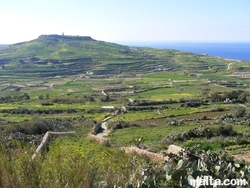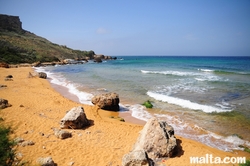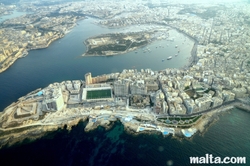Information about Malta, Gozo and Comino: geography, history, economy, weather and cities
A brief outline of the Maltese Islands
Malta, Gozo and Comino are located in the middle of the Mediterranean Sea, just 96 km south of Sicily. The Maltese population is distributed on three of the 18 islands that form the Maltese archipelago, and is about 414,000 people.

Maltese sunshine and Mediterranean landscapes
While packing your bags, you can almost leave your umbrella and raincoat at home. Malta has a rainy season that last from October to February, but also detains the lowest rainfall rate in Europe and the climate is mild all year round. But in case you fear the heat, don’t worry because cool north-westerly winds will refresh your summer days.
The geographical diversity of the islands is quite remarkable if we consider the small size of the Maltese territory: while Gozo and Comino have green and luxuriant vegetation and appears somewhat wild, Malta is densely urbanised, characterised by dry landscapes and hosting a variety of succulent plants.
Sandy, rocks or pebbles? Any kind of beach you like, Malta has it
The Maltese coastline reflects this diversity on every coast of the littoral. Sandy beaches can be found mostly in the North side of the islands, whereas the South of Gozo and Malta are home of high cliffs steering down to the blue sea and to small rocky beaches, creating a beautiful scenery. 
The West coast and the East coast have a similar geological formation of bays and coves, but largely differs in numbers and dimensions: the oriental side has three large bays and the occidental side hosts a concentration of small and natural harbours.
A glorious historical heritage
This diversity is peculiar for Maltese Heritage as well. Mysterious remains and megalithic temples of prehistoric ages are found next to military buildings and fortifications erected by the Knights of the Order of Saint John. Traces of the British presence on the islands are still present and range from driving on the left to the military bases used during the Second World War, and displays of pure Maltese style can be seen in the vast majority of houses, looking up to the colourful enclosed wooden balconies.
Maltese safe and rising economy
Tourism, together with the financial services drive Malta's economic sector, which is doing quite well, compared to the EU average. Despite the fact that the island relay on imported goods for around 80% of its needs, it can show a surprisingly low unemployment rate, mainly because of the constant growth and because of policies encouraging continuous training for the labour force.
This interesting geography of Malta, its mild climate and its millenary heritage, combined with the hospitality of the Maltese people, are the strong points that made the Maltese archipelago a renewed tourist resort in the South of the Mediterranean. Luqa International Airport is in the South of the Island, 9 km away from Valletta, connects Malta to the rest of Europe via several direct flights daily.

Malta at a glance..
Malta is the largest island of the archipelago, by extension and population. It is as varied as it can be: even within the cities the mixture of sacred and profane, of ancient and new can be found in the same street. For example, its capital city Valletta has been entirely declared UNESCO World Heritage Site, but it is at the same time a cultural and commercial centre, attracting thousands of both workers and visitors on a daily basis.
The old capital city, Mdina, is built on a hill overlooking the south western coast of Malta, following a clear military strategy. The “Silent city”, as the Maltese call it, offers a unique mixture of medieval and baroque architecture enclosed by walls and bastions. The area of St. Julians and Paceville, where the Maltese nightlife carries on till the smaller hours, in clubs, bars, restaurants and lounges, with different styles and music, to please everyone.
..and glimpses of Gozo & Comino
Gozo and Comino, the other islands of the archipelago, are significantly different from mainland Malta, as well as from each other.
Gozo is a rural island, where people are friendly and have a simple countryside life. Its highlights are the uncontaminated wildness of its nature, the clearness of its water and a non-negligible cultural and architectonic patrimony. Prehistoric temples, sandy coastline, cliffs and creeks attracts tourist coming to Malta for a few days, although it would be worth to stay in Gozo much longer to fully experience its relaxed rhythms and customs.
Comino was the Knights of the Order of Saint John’s game reserve, and as a military outpost to protect the sister islands from piracy and invaders. Nowadays it is one of the favourite destinations for cruises that takes tourists to its famous Blue Lagoon, from where it is possible to see one of the most suggestive views of Malta skyline and features. The bay’s name is no coincidence, its water are deep blue, and ideal for snorkelling and diving.

